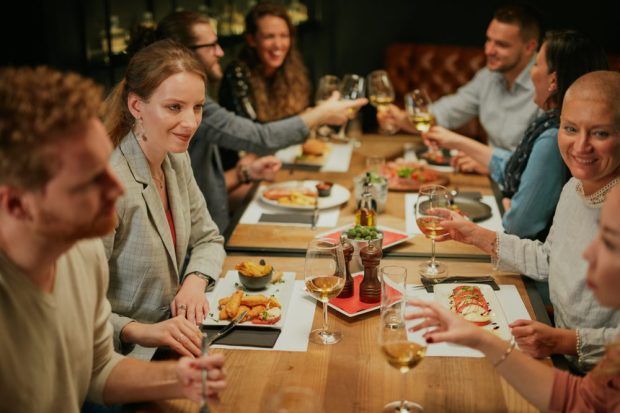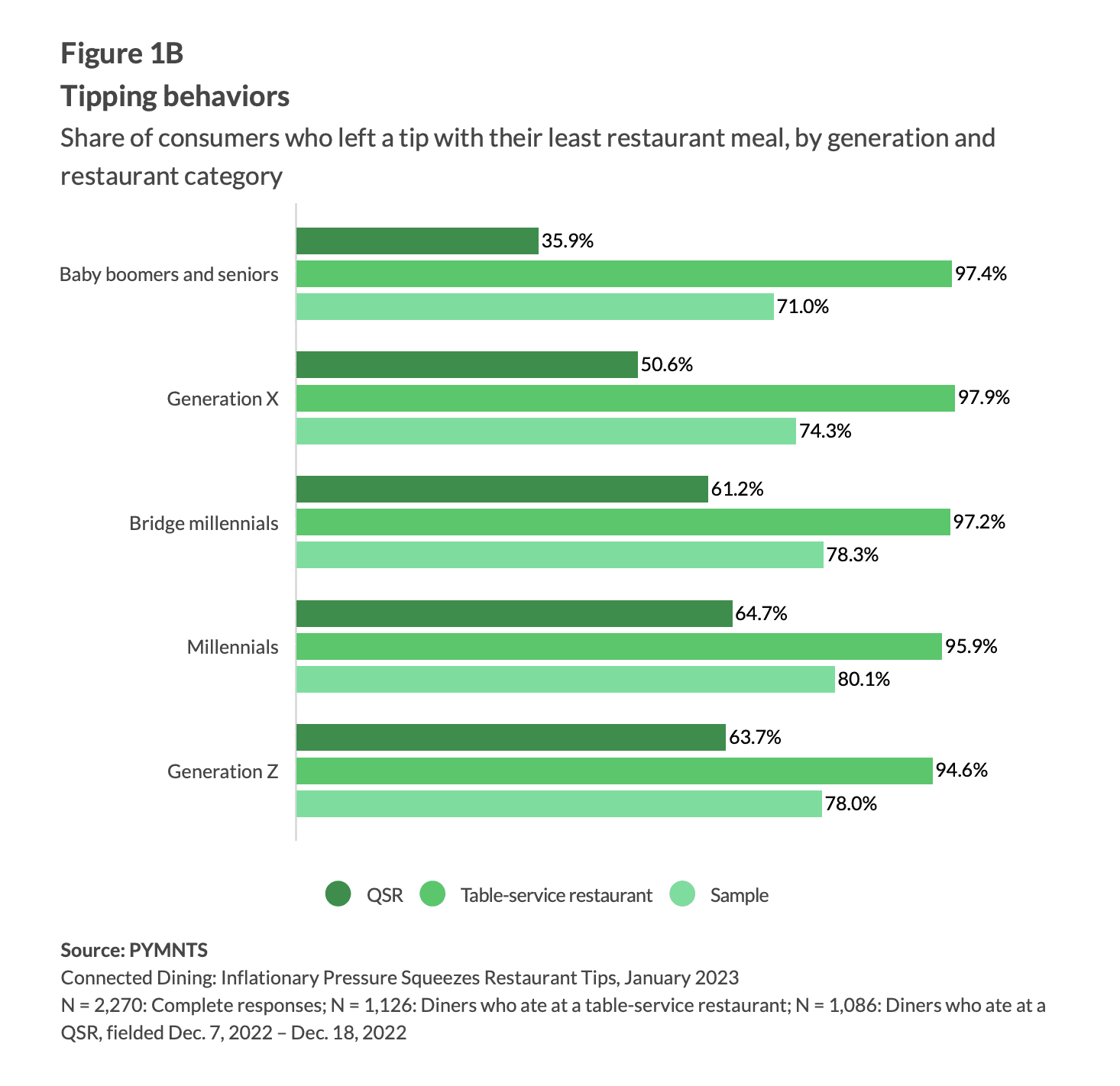Millennials Tip at QSRs While Seniors Save Them for Full-Service

With generational divides in tipping practices, fast-food workers are left hoping for millennial customers.
For PYMNTS’ recent study “Connected Dining: Inflationary Pressure Squeezes Restaurant Tips,” the first edition of PYMNTS’ Connected Dining series, we surveyed a census-balanced panel of more than 2,200 U.S. consumers in December, asking about how they tip at different kinds of restaurants. The results revealed that, while diners across age groups more or less agree on best practices at full-service restaurants (FSRs), there are stark differences in how different generations behave at quick-service restaurants (QSRs).
Overall, millennials are the most likely to tip at restaurants, with 80% having left a tip with their last restaurant meal. Meanwhile, baby boomers and seniors are the least likely to tip, with only 71% doing the same.
When it comes to FSRs, there is little variation in different generations’ tipping practices. Gen X consumers are the least likely to tip by a small margin, with 98% having done so on their last purchase, compared to 97% of baby boomers and seniors and bridge millennials, 96% of millennials and 95% of Gen Z. As such, even the least likely group to tip FSR employees still does so nearly every time.
However, at QSRs, there is significantly more variation, with younger consumers apparently feeling much more pressure to tip even for grab-and-go purchases than their older counterparts. Nearly two-thirds (65%) of millennials left a tip with their most recent QSR meal, as did 64% of Gen Z diners and 61% of bridge millennials. In contrast, only 51% of Gen X consumers and a dramatically lower 36% of baby boomers and seniors did the same.
These findings suggest a shift in norms around dining, with younger restaurant customers seeing tips not as a payment for the privilege of being waited on but as a standard practice regardless of service mode.
